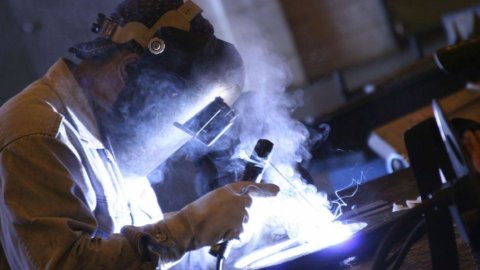"The data is contradictory, but the expectations are positive." This, in extreme synthesis in the words of the general manager of the Bank of Italy in Lombardy, Giuseppe Sopranzetti, the state of health of the Lombard economy, according to the data of the economic update released today. A situation, that of the most productive Italian region, which substantially mirrors that of the country: timid confidence, comforted by some numbers but also denied by others.
Surely the glass half full is that of demand, which in the first months of 2013 returned to growth also internally: the curve is therefore starting to rise again, even if at the moment it is just above the lows of the first half of 2009. So more production? No. Or rather, only for large companies, those with over 200 employees, and by just +0,4% in the first half, while the average is dragged down in particular by -0,8% of companies with less than 50 employees. Evidently many companies have downsized (the rate of use of the plants is stable compared to 2012 and still very low, at 71%) and are struggling to get back on the path of investments.
This is also because, as emerges from a outlook on financial intermediation even less optimistic than the results of the real economy, companies receive less and less loans. Here the data is particularly significant: while bank loans to households remain around a zero growth level, that to businesses (especially large ones, which however paradoxically are the ones doing better) is again plunged to even lower levels than those of the first quarter of 2010, which were the lowest since the great crisis: -3,2% in June over twelve months, -4,7% in August.
The most affected sector remains that of services (-5,9%, -3,9% in 2012), followed by manufacturing (-4,1%, -3,4% in 2012), while the smallest decline is that of loans to the construction sector (-1,7%, -1,8% last year). The surprise, however, is that despite the objective decrease, businesses are less pessimistic about access to finance: it will be for the signs of recovery, it will be for the alternative forms of credit (bonds, mini-bonds), but while in 2012 one company out of 4 complained of a tightening of access to bank credit, now it is 18% of them to do it. Tightening which is also logical given that according to data collected by banks and financial companies the level of insolvency of Lombard companies has surpassed any historical high in recent years: in the 12 months ending in June, the flow of new non-performing loans adjusted in relation to loans at the beginning of the period reached 2,1%, an increase from 1,7% at the end of 2012 and higher than that recorded during the 2008 recession -2009. Businesses are therefore finding it increasingly difficult to pay, and as Cerved pointed out just today, more and more are closing their doors: in 2013 in Italy we are already at almost 10 defaults, a quarter of which in Lombardy.
After all, going back to the real economy, there are perhaps more half-empty glasses than full ones: it is essentially only manufacturing that is saved, while the trends in construction and services are still negative, as well as on the public works side, despite the imminence of Expo 2015, the decline continues after the boom of early 2010, when many large construction sites were started. Employment, however, held up at 64,8% in the first half, a rate higher than the country's average, even if with unemployment on the rise.
In any case, despite the slight recovery in domestic demand and awaiting a return to production to its full potential, once again it is exports that save the Lombardy economy. The novelty, if anything, is that even this bulwark is creaking in 2013: trade with European countries has in fact further decreased from -1,4% in 2012 to -2,9% in the first six months of this year, but above all the lifeline ofextra-EU exports, that of the famous emerging countries that hoard Made in Italy products (but this year we did particularly well only in Russia and China), it collapsed from +10,1% in 2012 to the current +3,2%..
However, exports outside Europe constitute almost half of the total exports made by Lombardy: 25,4 billion euros out of a total of 54,1. Going to look at the individual sectors, however, the data is more than conflicting and even worrying for some sectors. Like that of coke and refined petroleum products, which fell from +12,2% to -27,2%, or like mining, from -1,7% in 2012 to -15,8% in the first six months of 2013. Or again like energy, from -2,9% to -7,3%. On the other hand, Food&Beverage is back in positive territory, sunk last year to -4,5% and now at +0,5%, metals are also recovering, albeit still in negative territory, but the best exploit comes from agricultural products and of fishing: from -5,4% in 2012 to the current +6,6%.
Read the full analysis





